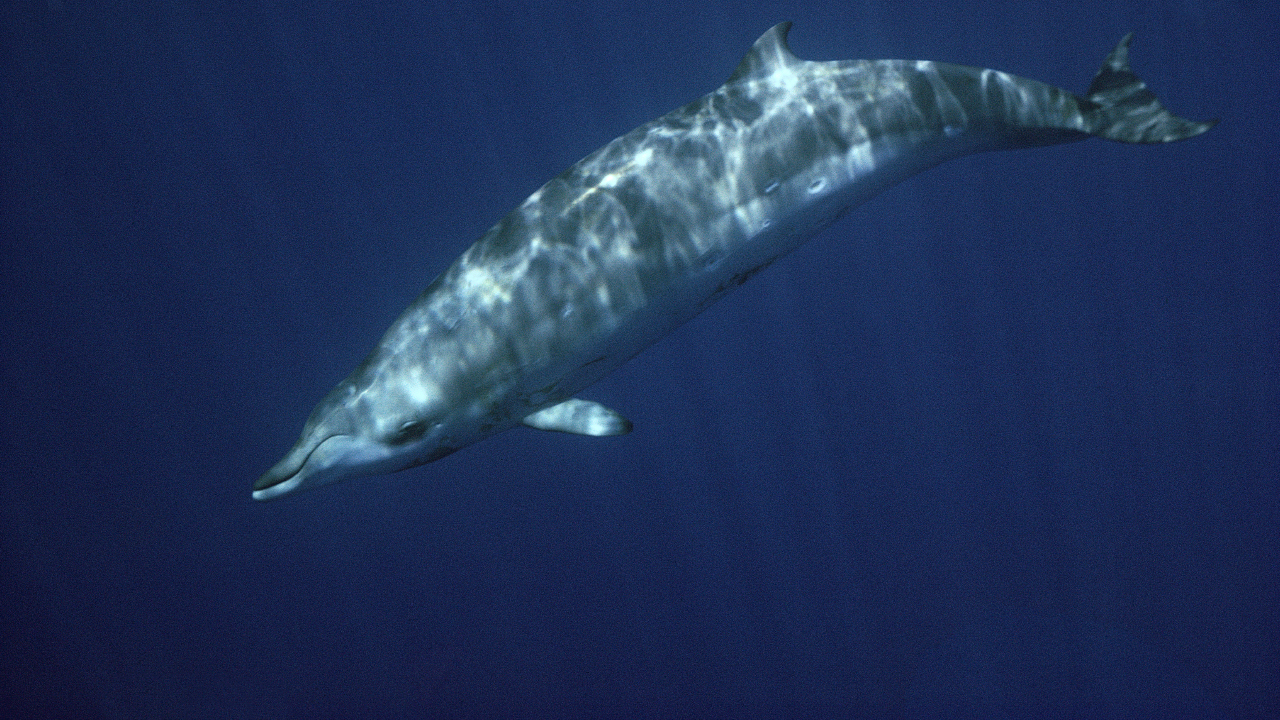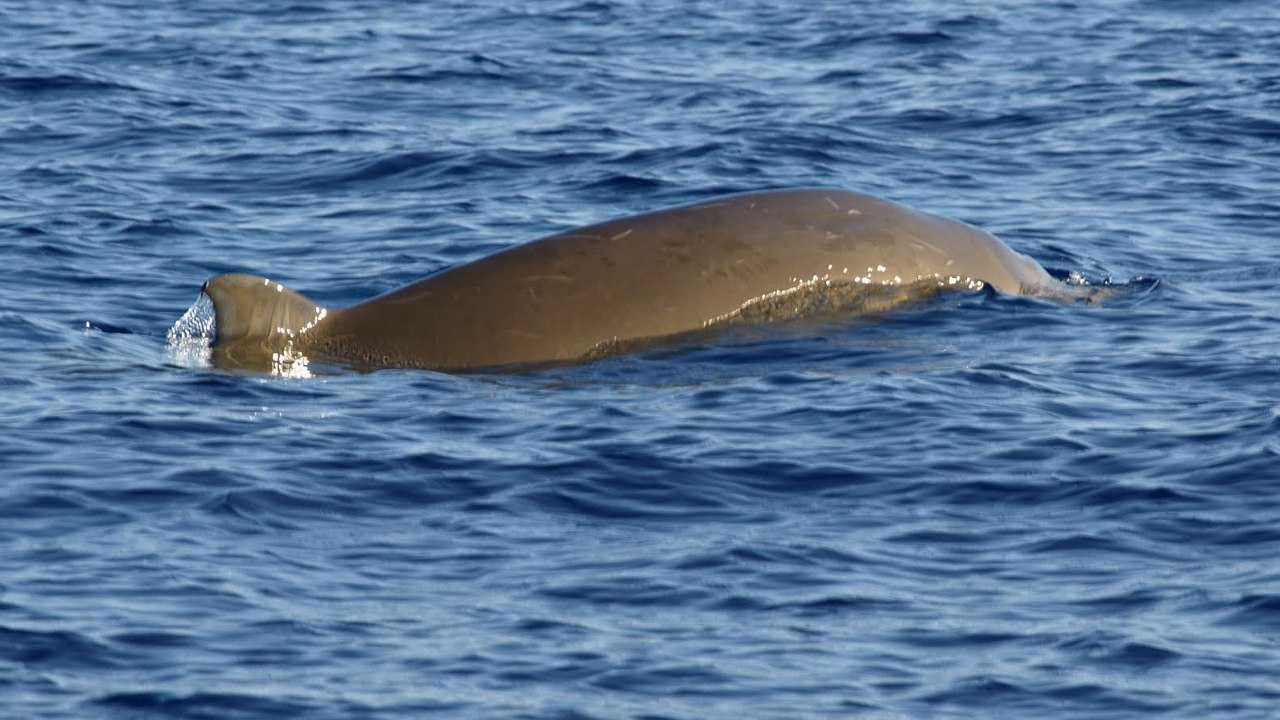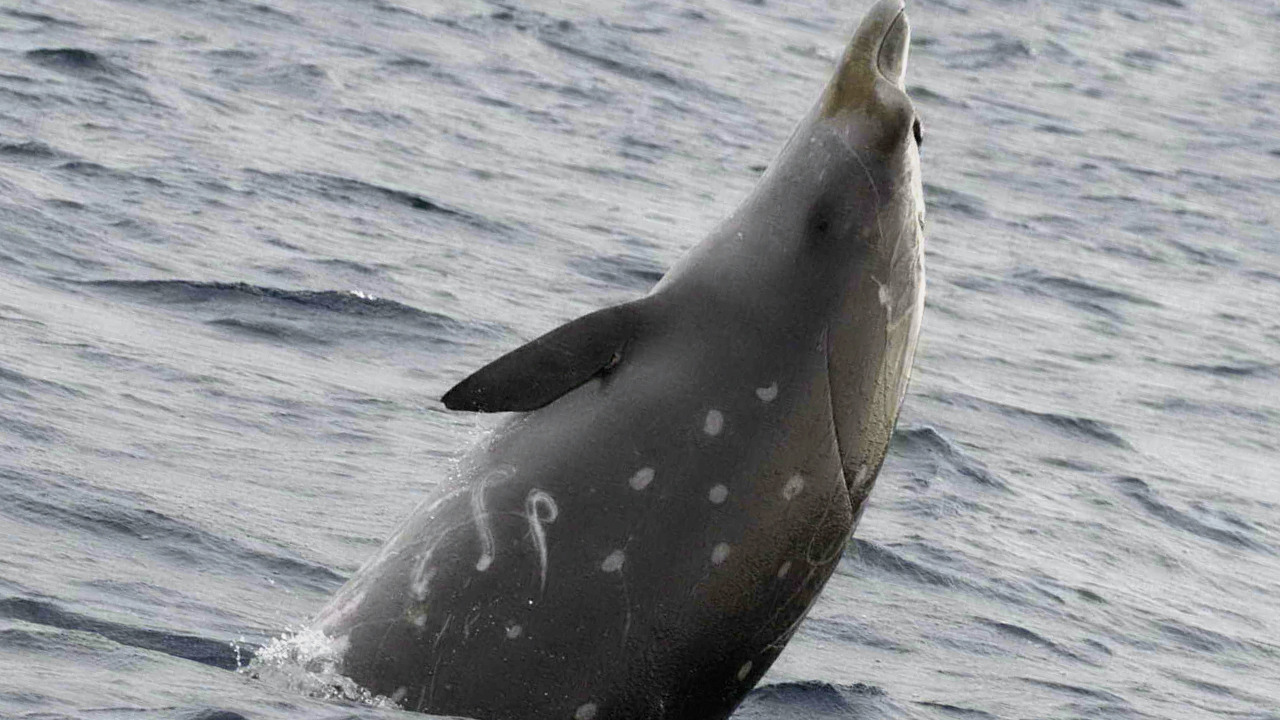Blainville’s beaked whale
Mesoplodon densirostris
-
 The Blainville’s beaked whale is a species of toothed whale that belongs to the family of beaked whales and the genus Mesoplodon, one of 13 that belong to that genus.
The Blainville’s beaked whale is a species of toothed whale that belongs to the family of beaked whales and the genus Mesoplodon, one of 13 that belong to that genus. -
 The distinctive shape of the head makes them easy to distinguish from other beaked whales, as they have a very flat melon and their beak is narrow and of moderate length. The rear part of its lower jaw is heavily arched upward from its centre. A single pair of teeth project out from the lower jaw and rise above the upper jaw. The females, however, do not have teeth.
The distinctive shape of the head makes them easy to distinguish from other beaked whales, as they have a very flat melon and their beak is narrow and of moderate length. The rear part of its lower jaw is heavily arched upward from its centre. A single pair of teeth project out from the lower jaw and rise above the upper jaw. The females, however, do not have teeth. -
 The bodies of these whales are often marked with scars and scratches, likely from competition among males for females using the 2 large teeth that protrude from the middle of the jaw. They have a single nostril or blowhole. Beaked whales are generally slender with a small dorsal fin placed towards the rear on the back. The rear edge of the flukes usually lacks a well-defined notch.
The bodies of these whales are often marked with scars and scratches, likely from competition among males for females using the 2 large teeth that protrude from the middle of the jaw. They have a single nostril or blowhole. Beaked whales are generally slender with a small dorsal fin placed towards the rear on the back. The rear edge of the flukes usually lacks a well-defined notch. -
 As with other beaked whales, the Blainville’s beaked whale lacks teeth to catch its prey and the teeth of the males are only used in fights with other males. Instead, the whales use suction to hoover up their prey. To increase suction, the whale uses its mobile and strong tongue. It also has a pair of throat grooves that allows the whale to expand its throat, thereby increasing the suction even further.
As with other beaked whales, the Blainville’s beaked whale lacks teeth to catch its prey and the teeth of the males are only used in fights with other males. Instead, the whales use suction to hoover up their prey. To increase suction, the whale uses its mobile and strong tongue. It also has a pair of throat grooves that allows the whale to expand its throat, thereby increasing the suction even further. -
 Blainville’s beaked whales remain underwater for 10–40 minutes, surfacing to breathe for just a few minutes before diving again. When they surface, they thrust the jaw and snout out of the water, rocking the head back into the water as the dorsal fin surfaces. These whales are deep divers and are rarely seen. Many species are known only from a few specimens, and little is known about the life history and biology of the group.
Blainville’s beaked whales remain underwater for 10–40 minutes, surfacing to breathe for just a few minutes before diving again. When they surface, they thrust the jaw and snout out of the water, rocking the head back into the water as the dorsal fin surfaces. These whales are deep divers and are rarely seen. Many species are known only from a few specimens, and little is known about the life history and biology of the group.
